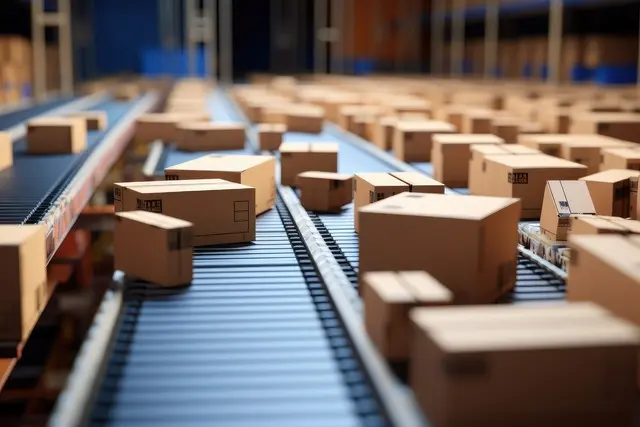Humanizing Demand Forecasting Automation: Revolutionizing Supply Chain Management
In the ever-evolving landscape of supply chain management, demand forecasting has long been a critical yet challenging task. Traditional methods often fall short in capturing the complexity of modern markets, leading to inefficiencies and inaccuracies. Demand Forecasting Automation emerges as a game-changer, leveraging the power of Python, AI, and cloud-based solutions to streamline this process, empowering businesses with unparalleled efficiency and precision.
Demand Forecasting Automation with Python and AI empowers supply chain managers to harness historical sales data, market trends, and external factors, enabling them to make informed predictions about future demand patterns and variability. This automation not only saves countless hours of manual labor but also eliminates human error, ensuring the accuracy and reliability of forecasts.
By incorporating inputs from sales teams, marketing campaigns, and promotional activities, Demand Forecasting Automation provides a comprehensive view of demand drivers. This holistic approach allows businesses to anticipate changes in consumer behavior, adjust production schedules accordingly, and optimize inventory levels to meet fluctuating demand.

Python, AI, and the Cloud: The Power Trio for Demand Forecasting Automation
Unleashing the Potential of Unattended Bots with Python
Python’s versatility extends beyond attended bots, as it also excels in developing unattended bots for Demand Forecasting Automation. These bots can operate autonomously, continuously monitoring and analyzing data to generate accurate demand forecasts. They can be scheduled to run at specific intervals or triggered by certain events, ensuring that forecasts are always up-to-date and responsive to market dynamics.
Attended Bots: Empowering Humans with Intelligent Assistance
Attended bots enhance the capabilities of human forecasters by providing real-time insights and automating repetitive tasks. Built with Python, these bots can be customized to cater to specific forecasting needs. They can assist with data retrieval, analysis, and visualization, allowing forecasters to focus on more strategic tasks and make informed decisions.
Cloud Platforms: Orchestrating Automation with Unparalleled Power
Cloud platforms offer a comprehensive suite of features that far surpass traditional RPA/workflow tools orchestrators. They provide scalable infrastructure, advanced analytics capabilities, and access to powerful AI services, enabling businesses to build and deploy Demand Forecasting Automation solutions that are both robust and agile.
AI: Enhancing Accuracy and Handling Edge Cases
AI plays a pivotal role in improving the accuracy and handling edge cases in Demand Forecasting Automation. Machine learning algorithms can identify complex demand patterns and anomalies that traditional methods may miss. AI techniques such as image recognition, natural language processing (NLP), and Generative AI can further enhance automation by extracting insights from unstructured data sources, understanding customer sentiment, and generating synthetic data for scenario planning.

Building the Demand Forecasting Automation Engine with Python and the Cloud
Step 1: Data Ingestion and Preprocessing
- Utilize Python’s data handling capabilities to extract data from various sources, including historical sales records, market trend reports, and external data feeds.
- Apply data cleaning and transformation techniques to ensure data consistency and quality.
Step 2: Demand Forecasting
- Employ Python’s machine learning libraries to build and train statistical models or ML algorithms for demand forecasting.
- Leverage cloud computing resources for scalable and efficient model training and deployment.
Step 3: Input Integration
- Integrate Python scripts with cloud-based APIs to gather inputs from sales teams, marketing campaigns, and promotional activities.
- Use Python’s flexibility to handle diverse data formats and sources.
Step 4: Forecast Generation
- Develop Python functions to generate demand forecasts at various levels of granularity (SKU, product category, geographic region).
- Utilize cloud platforms to schedule and automate forecast generation processes.
Data Security and Compliance
- Implement robust data security measures in Python code to protect sensitive data.
- Ensure compliance with industry regulations and standards by leveraging cloud platforms’ built-in security features.
Python vs. No-Code RPA/Workflow Tools
- Python offers greater flexibility, customization, and scalability compared to no-code RPA/Workflow tools.
- Python allows for the development of tailored solutions that meet specific Demand Forecasting Automation requirements.
- No-code tools often lack the sophistication and power needed for complex forecasting models and data handling.
Algorythum’s Python-First Approach
Algorythum recognizes the limitations of off-the-shelf automation platforms and takes a Python-first approach to Demand Forecasting Automation due to:
- Customization: Python enables us to build solutions that precisely align with clients’ unique business needs.
- Scalability: Python’s robust libraries and cloud integration allow us to handle large datasets and complex forecasting models.
- Accuracy: Python provides the flexibility to implement advanced statistical and ML techniques for highly accurate demand forecasts.

The Future of Demand Forecasting Automation
As technology continues to evolve, Demand Forecasting Automation is poised to become even more powerful and transformative. Potential future enhancements to the proposed solution include:
-
Integration with IoT and Edge Computing: Real-time data from IoT sensors and edge devices can provide valuable insights for more accurate and granular demand forecasts.
-
Advanced AI Techniques: Generative AI and reinforcement learning can further improve forecasting accuracy by generating synthetic data and optimizing forecasting models.
-
Prescriptive Analytics: By combining Demand Forecasting Automation with prescriptive analytics, businesses can make data-driven decisions to proactively adjust production schedules and optimize inventory levels.
To stay at the forefront of these exciting advancements, subscribe to Algorythum’s blog for the latest industry-specific automation insights. Contact our team today for a free feasibility assessment and cost estimate to explore how Demand Forecasting Automation can revolutionize your supply chain management.

Algorythum – Your Partner in Automations and Beyond
At Algorythum, we specialize in crafting custom RPA solutions with Python, specifically tailored to your industry. We break free from the limitations of off-the-shelf tools, offering:
- A team of Automation & DevSecOps Experts: Deeply experienced in building scalable and efficient automation solutions for various businesses in all industries.
- Reduced Automation Maintenance Costs: Our code is clear, maintainable, and minimizes future upkeep expenses (up to 90% reduction compared to platforms).
- Future-Proof Solutions: You own the code, ensuring flexibility and adaptability as your processes and regulations evolve.









